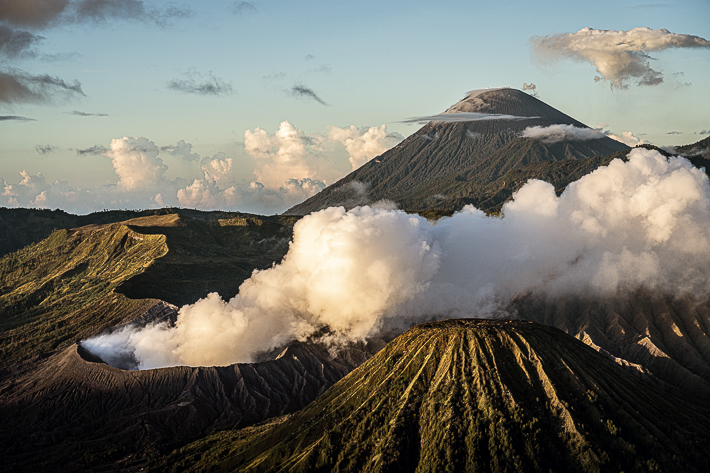
As a photographer, waking up at three in the morning to capture photos of beautiful landscapes is a given. When you add the blue hour, you add up to another 30 minutes. The Indonesian island of Java is almost entirely of volcanic origin and has 45 volcanoes which are considered active. Indonesia has the most volcanos in the world, with 76 volcanoes that have erupted in recent history. Above is a photo of Mount Bromo and Mount Semeru at sunrise. You can still see the smoke coming from the mountain top on the left.
Above is a 12 second time lapse of the sunrise at Mount Bromo and Mount Semeru in June 2022. The smoke that seem to be coming from the volcano on the left is the activity from Mount Semeru.
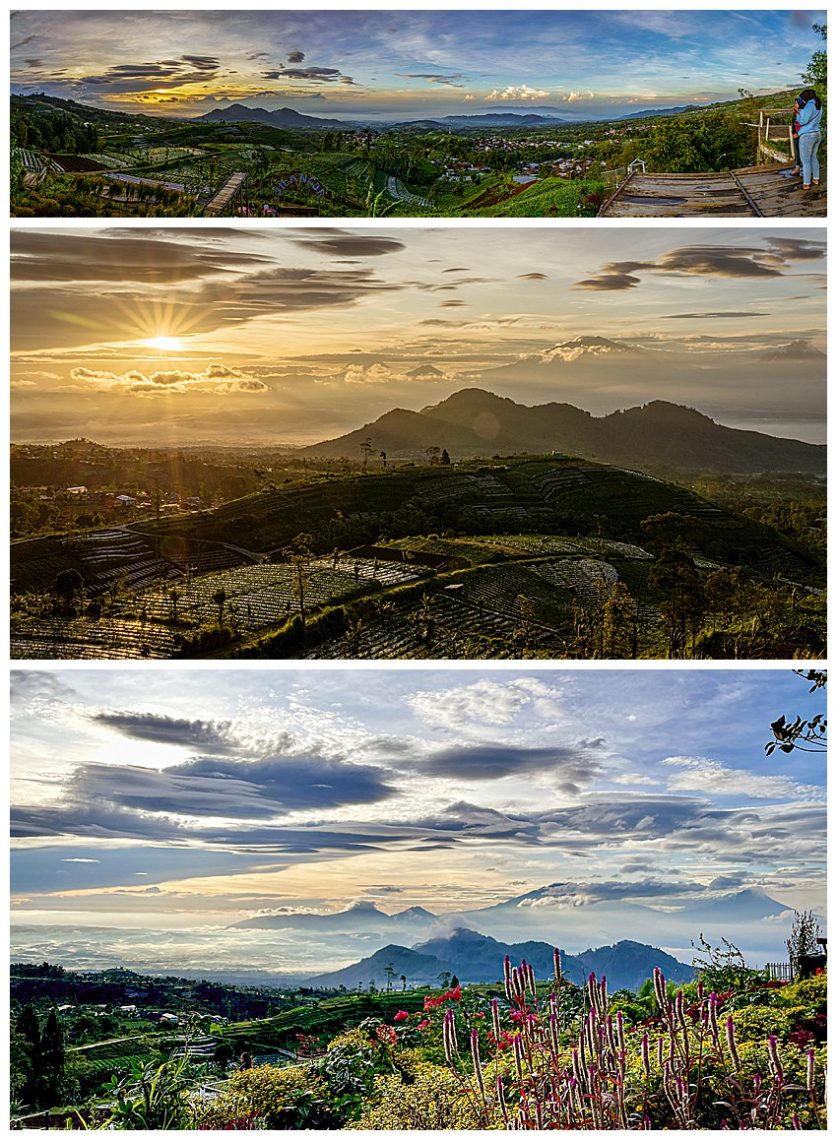
One morning, we arose at 3AM to drive to a sunrise with multiple volcanoes in the background. These included Mount Merapi, which had a major eruption in 2010. This is only place where we have ever been served cappuccinos while photographing sunrises! This area has been built out with carpeted stairs, tables and chairs on a terrace, for groups to enjoy seeing the sunrise with multiple volcanoes in the background.
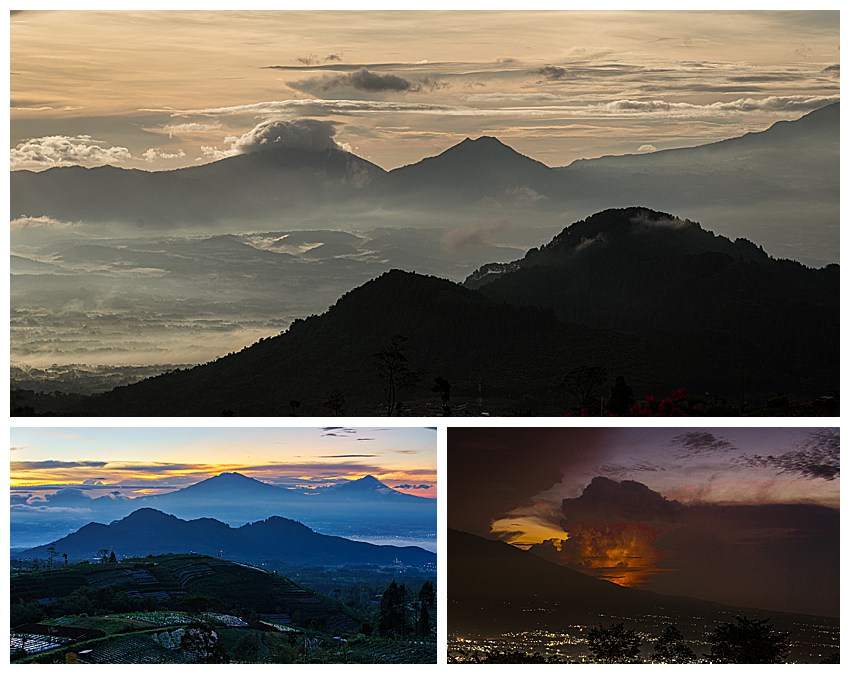
These are a few abstracts capturing the various volcanic peaks, including Mount Merapi, Mount Merbabu, Mount Agung, and Mount Telomoyo. Mount Semeru is considered one of the world’s most active and hazardous volcanoes. It last erupted just months ago, in December 2021, killing 57 people and destroying over 5500 homes. A lightning storm was occurring over the volcano, and the lower right image captures the result. One of the local guides claimed the red glow is actually the reflection of the active lava in the caldera.
This 15 second timelapse shows the line of volcanos as the sun rose on that morning, June 17, 2022.
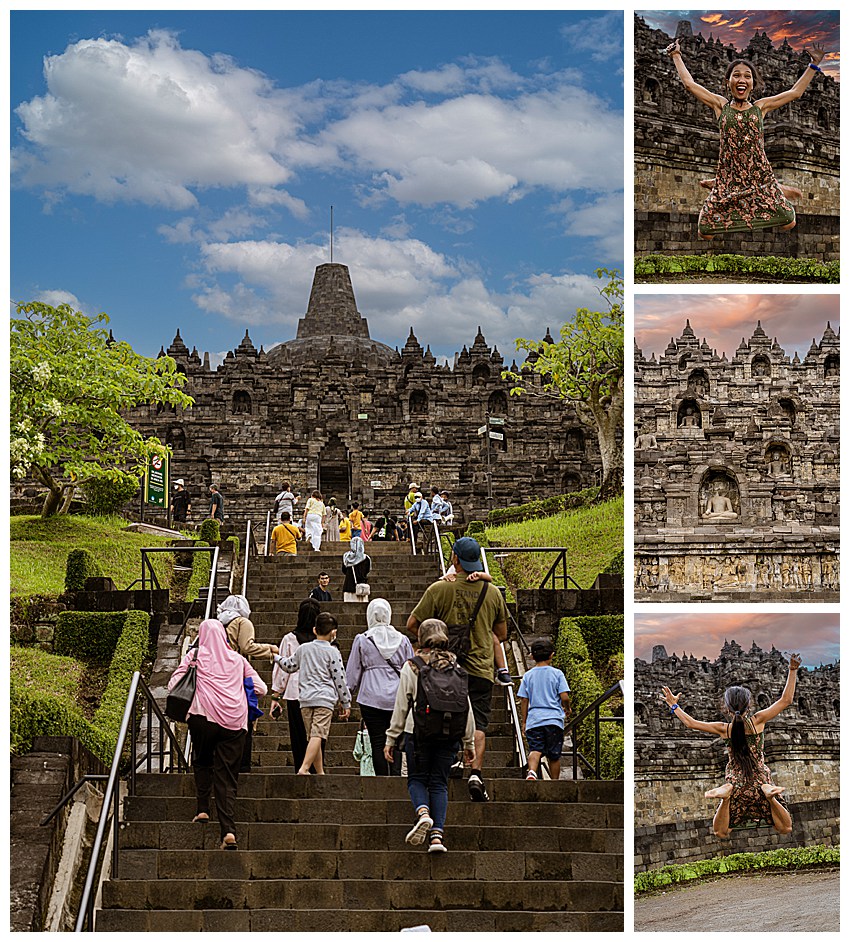
Borobudur Temple is the world’s largest Buddhist monument, and still used as a pilgrimage site. It was largely renovated in the 1970’s with the help of UNESCO, and was then declared UNESCO Heritage Site #596 in 1991. For many decades, it was considered a prime spot for serious photographers to climb to the top for spectacular sunrise images, with the Borobudur temples as foreground.
Unfortunately, it recently changed into private ownership and has become nothing more than an instagram photo op and major tourist trap — one of the worst we have experienced.
After charging foreigners 380,000 IDR to enter, you must then pay another 20,000 IDR to ride a bus the 1 mile back to the actual temple from the entrance location. After discovering that you are not allowed anywhere on the temple (fully blocked off with ample guards to assure compliance), you then must pay another 20,000 for a bus to return to the entrance. You must then walk a full Kilometer through endless tight rows of vendors selling the same knick-knacks over and over and over, until you are sure you must be in a maze without end. Even after you escape that labyrinth, there are still more vendors hounding you and refusing to accept ‘no’ until you enter the relative safety of your driver’s car.
Oh yeah, you can pay another 50,000 IDR for a VIP pass that allows you to bypass that maze of hawkers. Still another way to suck every penny they can.
The grounds no longer open until 9AM, so no sunrise photos are possible, even from the base of the temple that you can no longer access. The park also closes at 5PM, so no sunset possibilities either.
I am a prolific TripAdvisor reviewer (#1 reviewer in both Cuenca and Honolulu). Borobudur received a very rare 1-star review from me, and I strongly recommend any future travelers avoid this money grubbing commercial enterprise.
On a single bright note, Vina, one of the travelers with us who is also a professional model, posed for a few images (upper-right and lower-right).
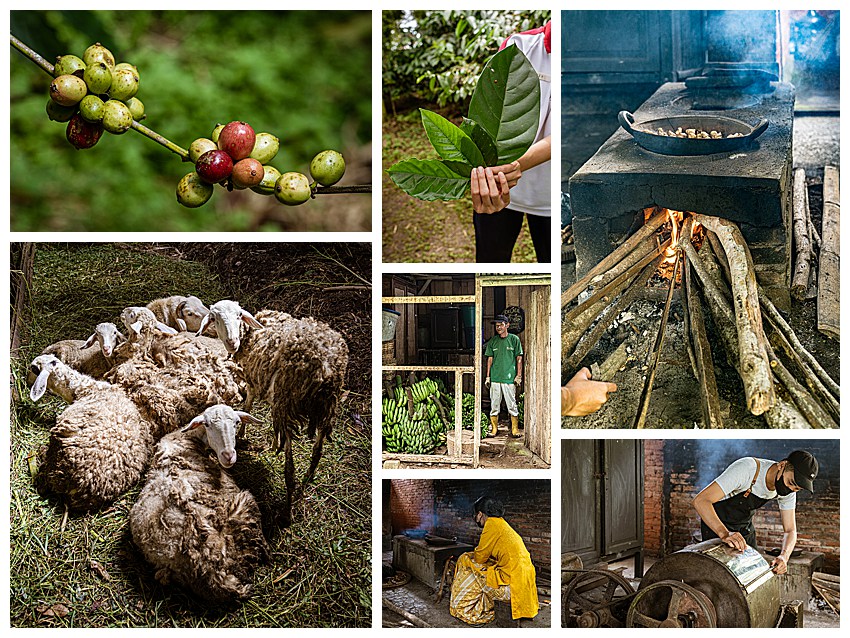
The Mesastila Resort and Spa, where we stayed for one night, is a unique place to experience. Each room has been reconstructed and decorated using authentic Javanese antiques, complete with a sunken bathtub, and views of the outdoors from the bath. The hotel is located in Magelang, close to Borobudur Temple, and we took a tour of the small Losari Coffee Plantation on site (above). The images show the various types of coffee grown on site, as well as bananas and other fruit. When you walk around the grounds, you can see multiple volcanoes on the horizon. The gourmet food from the on-site restaurant was not to be missed, and we would have enjoyed staying here for a week.
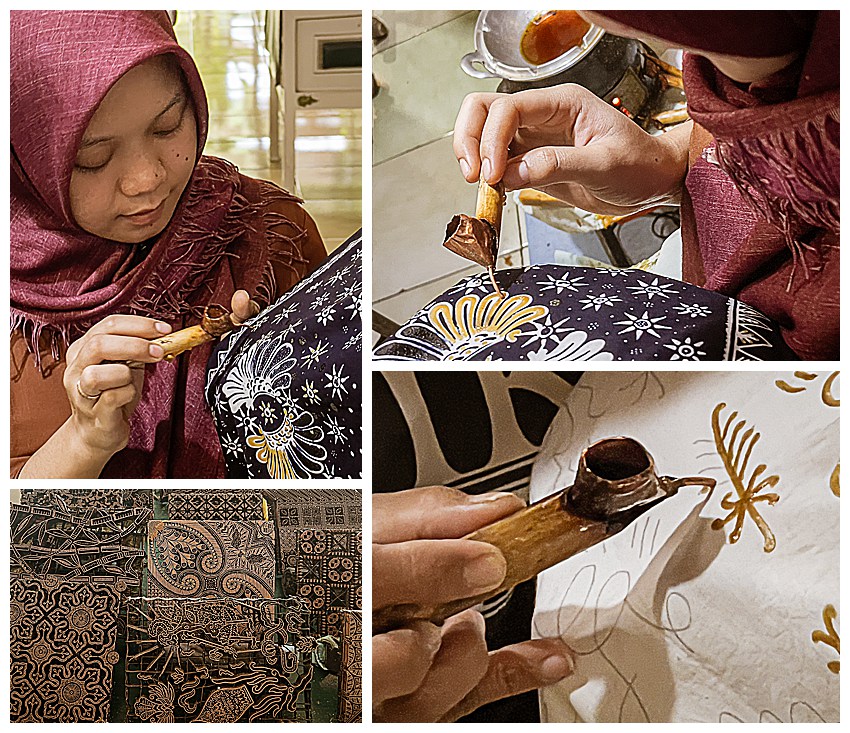
Batik originated in Java and is a technique of wax-resistant dye applied to the entire cloth. It is considered one of the most highly developed art forms of Indonesia. It is made by drawing with a spouted tool called a canting, or printing with copper stamps. The Batik process is considered an intangible UNESCO Cultural Heritage of Humanity in 2019. This manufacturing plant has just reopened after Covid.
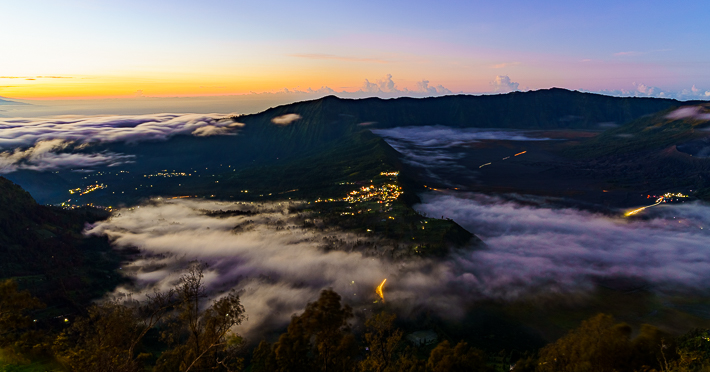
We will close with one peaceful image of the sun starting to rise over the line of volcanos, as a layer of fog passes over Malaga below.
